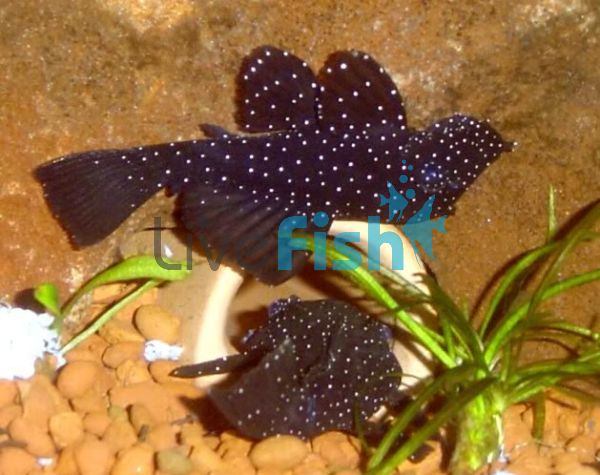Peppermint Bristlenose 4cm
Ancistrus Sp (L183)
These are a great version of the Bristlenose Family. Even at a small size there Black Body and White Spots are a stunning addition to your Aquarium, Not to mention they are a Algae Eating Machine!
$63.80
Availability: Out of stock
SKU
TF495040
- Buy 4 for $57.42 each and save 10%
- Buy 8 for $54.23 each and save 15%
- Buy 12 for $51.04 each and save 20%
These are a great version of the Bristlenose Family. Even at a small size there Black Body and White Spots are a stunning addition to your Aquarium, Not to mention they are an Algae Eating Machine!
These are a color morph of the Bristlenose family. Even at a small size there Black Body and White Spots are a stunning addition to your Aquarium, Not to mention they are an Algae Eating Machine!
Bristlenose plecostomus (Ancistrus genus)
First imported into Australia over 35 years ago, through decades of breeding by enthusiastic aquarists, this group of fish now offers many varieties. The original fish were collected from the rivers of the Amazon region. They derive their name from the antler-like whiskers on mature males. Mature females only have limited, or no whiskers.
They are a great fish to have in most freshwater aquariums. Inclined to mind their own business and graze on algae, completely nonaggressive. (Every tank should have one.) In fact, they are the perfect algae eaters. If algae aren’t available they are happy to suck on some algae pellets, even flake food that reaches the bottom of the tank. They also love blanched spinach or steamed zucchini. They are not strictly vegetarian either. Beef heart is eagerly “sucked away”. If a tank mate should die and remain unnoticed they will suck it down to bones.
Many aquarists have found they will breed in their community tank. They will seek out a cave or find somewhere to prepare a nesting surface under a rock or driftwood. They prefer a hard surface in a secluded place to lay their eggs. The male will guard the eggs. To avoid injury through fighting, it is important that each male has his own suitable “cave”.
They are happy in most community tanks, even small to medium size child community tanks. Their bony scales protect them from aggression by bigger tank mates. Mature specimens have a unique defense mechanism on the side of their heads. This is the final defense against being swallowed. They have a cluster of sharp spikes which they raise as a defense against becoming “dinner”. Beware, if you are moving these fish the spikes can become caught in your aquarium net. If this occurs, just stretch out the net until the fish is expelled into the tank.
They will tolerate a wide range of temperatures but recommended temperature range of 23-27C is best, with a PH between 6.5 -8.0, (Some breeders recommend this variety be kept at 6.5 - 7.5.) and a hardness range of 80-150ppm, but no more than 250ppm A few rocks with suitable hiding places should be provided. Aquarium driftwood is perfect; some aquarists say it is essential. They can live over 10 years.




